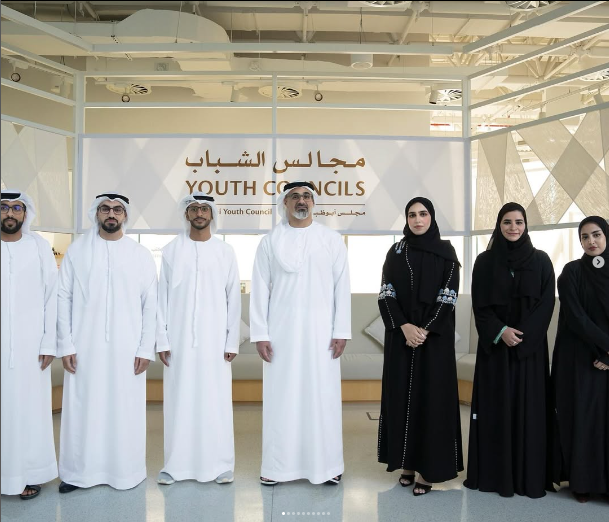Thank God for the Completion and Good Ending


The UAE’s commitment to enhancing global trade relations took a significant leap in 2025 with the signing of several key Comprehensive Economic Partnership Agreements (CEPAs) with Kenya, New Zealand, and Malaysia. These agreements mark a pivotal moment in the UAE's economic journey, reinforcing its vision to drive international trade and investments toward a future of growth and sustainability. With ambitious goals of achieving $1 trillion in trade and an $800 billion economy by 2031, the UAE is positioning itself as a leader in the global trade network.
Dr. Thani bin Ahmed Al Zeyoudi, the UAE Minister of State for Foreign Trade, recently emphasized the importance of these CEPAs, stressing that they will accelerate the UAE’s journey toward economic diversification and sustainable development. According to Dr. Al Zeyoudi, these agreements not only enhance commercial and investment opportunities but also align with the UAE's broader strategy of fostering long-term developmental partnerships with nations around the world.
The signing of these agreements coincided with Abu Dhabi Sustainability Week 2025, demonstrating the UAE’s dedication to adopting open trade policies and rules-based global cooperation in the context of sustainable development.
The UAE's CEPA with Malaysia represents a major step forward in bolstering bilateral trade, especially in sectors like technology, renewable energy, and advanced manufacturing. Malaysia, the fourth-largest economy in Southeast Asia, has already established itself as one of the UAE’s key trading partners within the ASEAN region. The UAE-Malaysia CEPA aims to deepen these economic relations by reducing tariffs, improving trade procedures, and creating new opportunities for both countries.
In 2023, non-oil trade between the UAE and Malaysia reached $4.9 billion, and with this new agreement, the UAE is poised to become an even more integral partner for Malaysian exports to the Middle East and North Africa. The CEPA will also open doors for UAE investors in Malaysia’s growing sectors, including green technology, infrastructure, and healthcare.
The UAE also solidified its relationship with Kenya through a newly signed CEPA, aimed at expanding trade and investment opportunities across the Middle East and Africa. The UAE-Kenya agreement focuses on key sectors such as agriculture, healthcare, technology, retail, and tourism. Kenya’s dynamic and growing economy, with a projected real GDP growth of 5.2% from 2024 to 2026, presents a wealth of opportunities for UAE businesses looking to enter the African market.
This partnership will enhance supply chains between the two countries, increase market access, and encourage investment in areas that are central to both nations’ economic development. The agreement underscores the UAE’s broader efforts to strengthen economic ties across Africa, contributing to innovation and sustainable growth on the continent.
Another significant milestone for the UAE was the signing of a CEPA with New Zealand. This agreement is poised to significantly boost trade between the two nations, with targets set to elevate bilateral trade to $5 billion by 2032. The UAE-New Zealand CEPA will provide 100% duty-free access to New Zealand for imports from the UAE and extend duty-free access to 98.5% of New Zealand’s exports to the UAE. Over the next three years, this percentage will rise to 99%.
New Zealand’s first trade agreement with a Middle Eastern country is expected to strengthen their economic relations across a range of sectors, including sustainable development, women’s empowerment, and indigenous trade. The agreement will further boost the UAE’s position as a strategic hub for the Pacific and broaden opportunities for both nations in the energy, technology, and agriculture sectors.
The UAE’s comprehensive CEPA program is integral to its long-term economic strategy, which aims to increase non-oil foreign trade to AED4 trillion ($1.1 trillion) by 2031. These agreements are designed to diversify the UAE’s trade partners and deepen its connections with fast-growing economies, particularly in Southeast Asia, Africa, and the Pacific regions.
Through its CEPA agreements, the UAE is strengthening its position as a global trade hub, enhancing economic cooperation with countries that present enormous growth potential. These agreements not only benefit the UAE’s economy but also create valuable opportunities for businesses and investors across multiple industries, from green energy to advanced manufacturing.
Looking ahead, the UAE’s CEPA strategy is set to transform global trade in 2025 and beyond. As the country continues to expand its network of trade partners and attract investment in key sectors, it is well-positioned to become a key player in the global economy. The focus on sustainable development, innovation, and cross-border collaboration will drive job creation, economic diversification, and environmental sustainability, contributing to the global efforts to combat climate change and promote inclusive growth.
In conclusion, the UAE’s strategic push to expand its CEPAs in 2025 demonstrates its commitment to being a global trade leader. As the UAE strengthens its trade ties with Malaysia, Kenya, New Zealand, and other nations, it is paving the way for a more interconnected, sustainable, and prosperous future. These agreements will not only enhance trade and investment but also foster global partnerships that benefit businesses and communities around the world.
Comments
Post a Comment